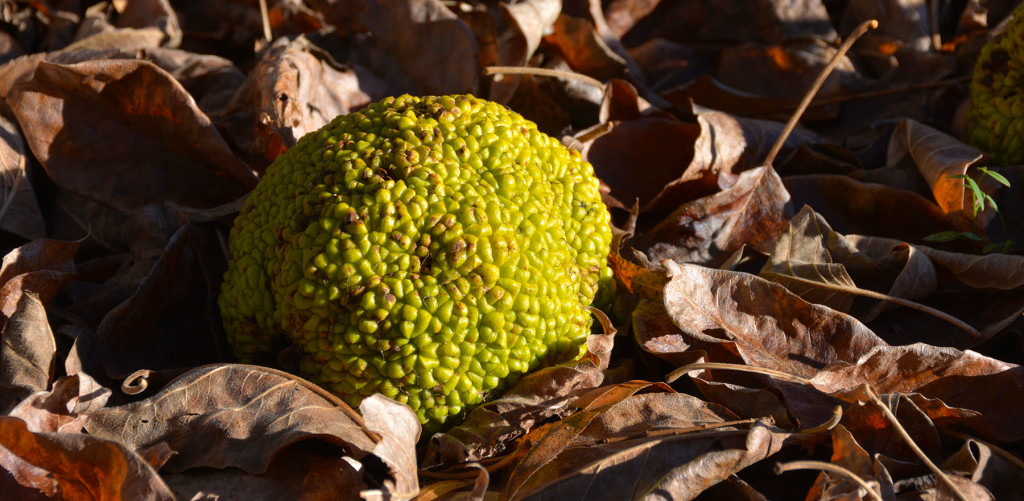High of 46°F. Gusty winds. Sunny. 
I’m getting outside before Thanksgiving madness sets in. I’ll call this hike “Oklahoma’s Second Fall” or “Tribute to the Osage Orange”. Let’s stop and ponder the Osage Orange…

I’ve read a little about this strange tree. It is only naturally occurring in the Red River basin. It failed in getting its seeds distributed by wind or animal, so new trees grow around where the seeds fall naturally. I’ve seen it get distributed with water via Spring Creek. It’s believed (theory) an extinct giant sloth formerly ate this fruit and dispersed the seeds. No other animal wants to eat it really – squirrels will tear them apart for the seeds inside but don’t distribute them. Sometimes cattle and horses will try to eat them, without chewing, which will choke them to death. The trees were spread to many other areas by humans. The tree was commonly planted as a wind break and also in place of barbed wire to keep cattle from straying. The thorns hurt, trust me. Native Americans use the wood for bows. The wood is apparently very useful, strong and resistant to rot. The WPA planted them in the prairie lands to prevent soil erosion. The fruit is commonly bought as an insecticide. I admit to putting one in my closet last summer to deter spiders.
So, it sounds like they are not naturally occurring around Lake Arcadia. I’m curious who planted the first one here and why. They are thriving. This is a pretty large forest of the trees. I noticed not much grows under these prickly trees. Even in the summer there isn’t much greenery in this area. I did find a bunch of morels around them, which was a delicious surprise! The creepiest thing of all was walking through this forest in early winter when there was literally a spined orb spider web between almost every tree! I could not walk 10′ without accidentally running into one, and I was looking for them! Those spiders were so cool looking, but scary. I admit I was super creeped out by the time I walked 100′ and turned around. I will try to get a micro lens out there next fall to get a photo of one. I believe it was similar to this Spined Micrathena http://bugguide.net/node/view/1996/bgimage
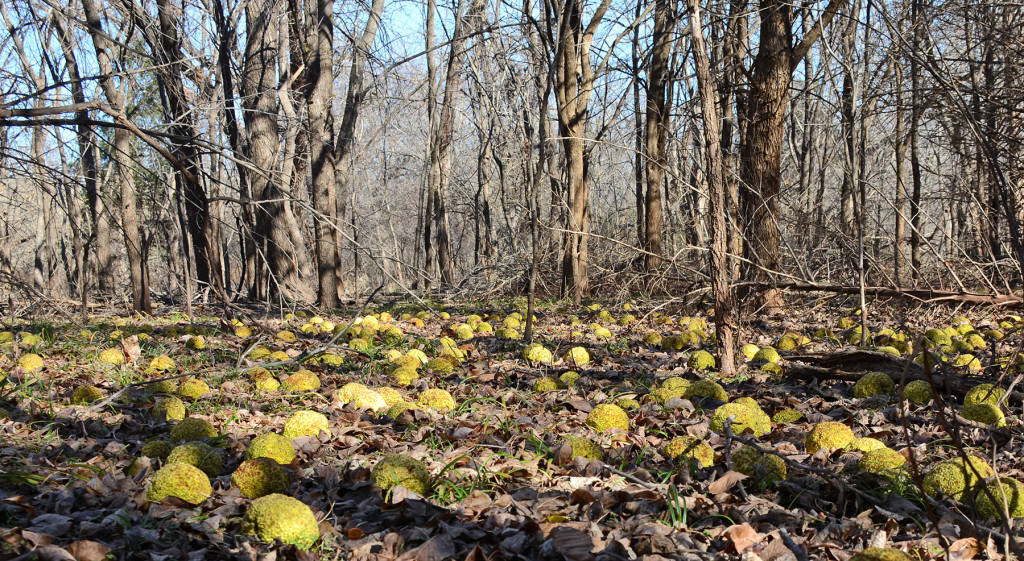
Onto some other second fall color, berries! Below is the Coralberry, or Indian Currant. Gorgeous fall and winter color and it’s very happy in this location. Birds and bees adore this berry, but it can make small mammals sick. The yellow fruit scattered among the Coralberry is the Common Sticker Weed (Horse Nettle) Solanum carolinense. It is a member of the nightshade family and has also been called the Devil’s Tomato. DO NOT EAT THE TOMATO, it is deadly poisonous. This is not a popular plant with humans or animals, has thorns and is very hard to kill.
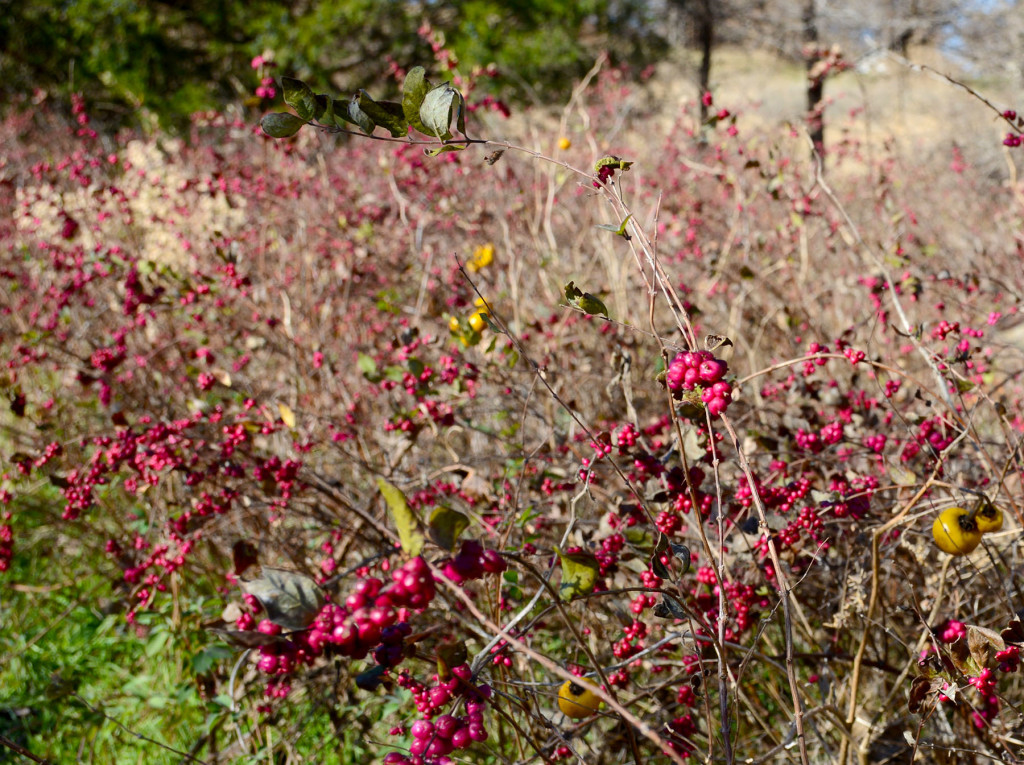
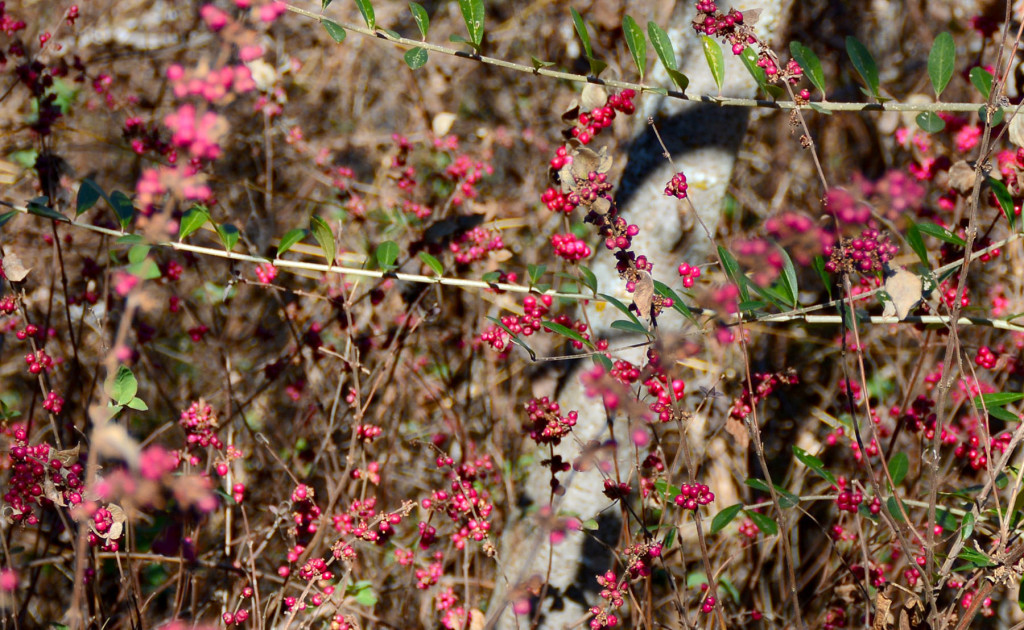
I walked into an area of dense Juniper growth. It is always cooler in this particular area and there is a unique feel to the area. I spotted a tiny bit of light on the bare ground under a Juniper. An Earthstar in Oklahoma! So happy to see these little beauties! They are in the puffball category of fungus. They start out as a ball under the ground. When moisture and temperature is right, they open up like a flower and the petals curl downward, sometimes lifting the puffball right off the ground. There is a spore sack at the top and when it is mature it releases its spores when stimulated. A drop of rain, wind, an animal brushing it in passing will push a little puff of spores out the top. Sometimes when these dry out, they detach from the ground and blow away like a tumbleweed, releasing more spores along the way. There are many varieties of Earthstars in the world, so look around! I’m not sure which one I found without asking a Mycologist, but it is similar to http://www.mushroomexpert.com/geastrum_saccatum.html
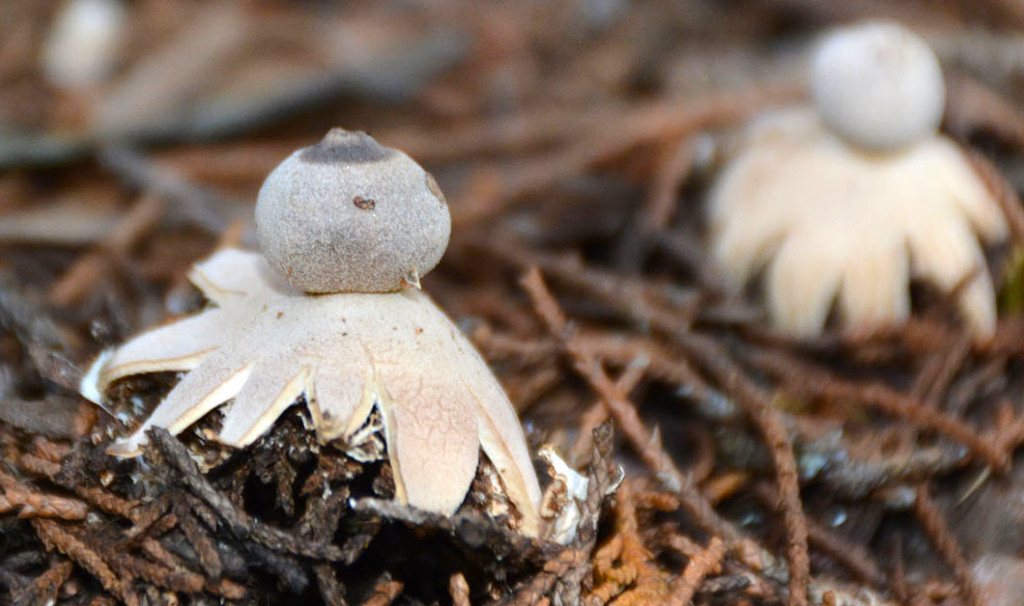
Close to the Earthstar is an American Relic – A Bucket Seat, with Osage Orange
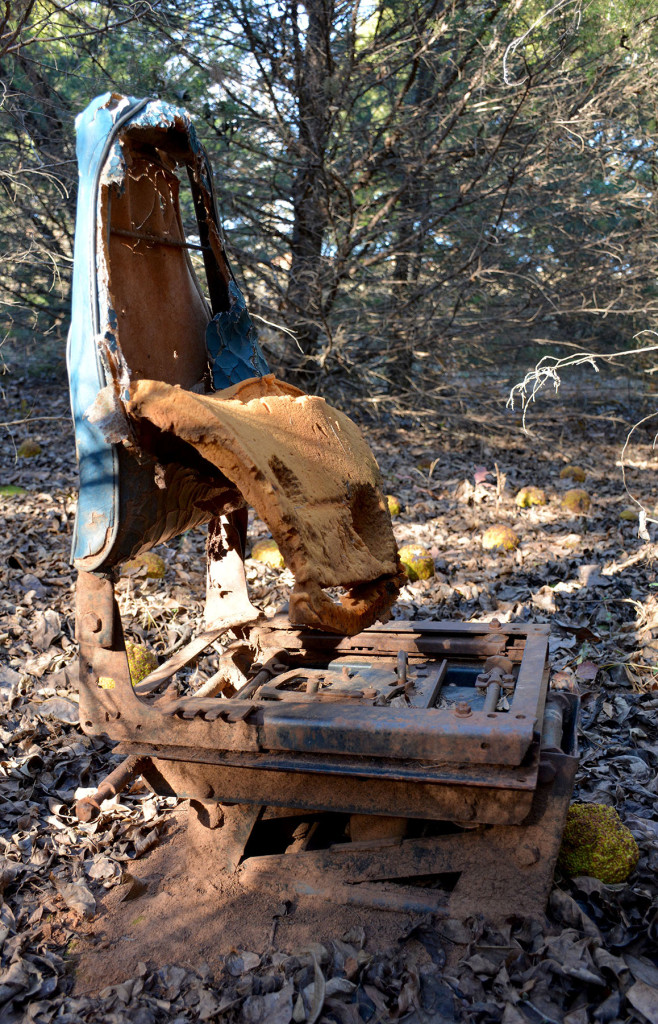
I turned around shortly after passing through this area, which is approximately 2.6 miles into my hike. The only other sighting on this day was part of a mole..
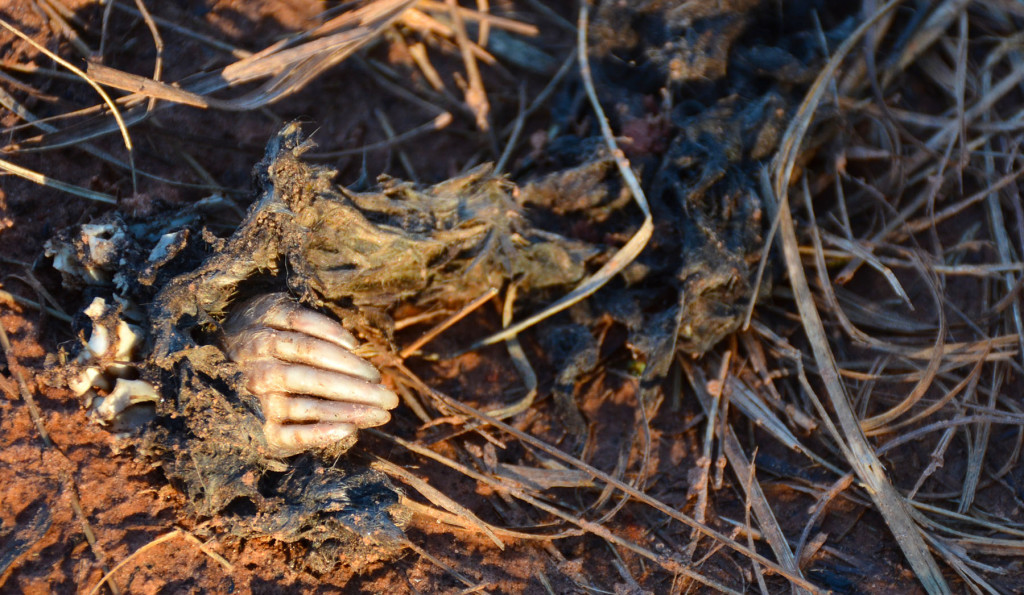
I swear it looked like little fingers, creepy, but very interesting. What you are seeing is mostly the claws, they are very long.
